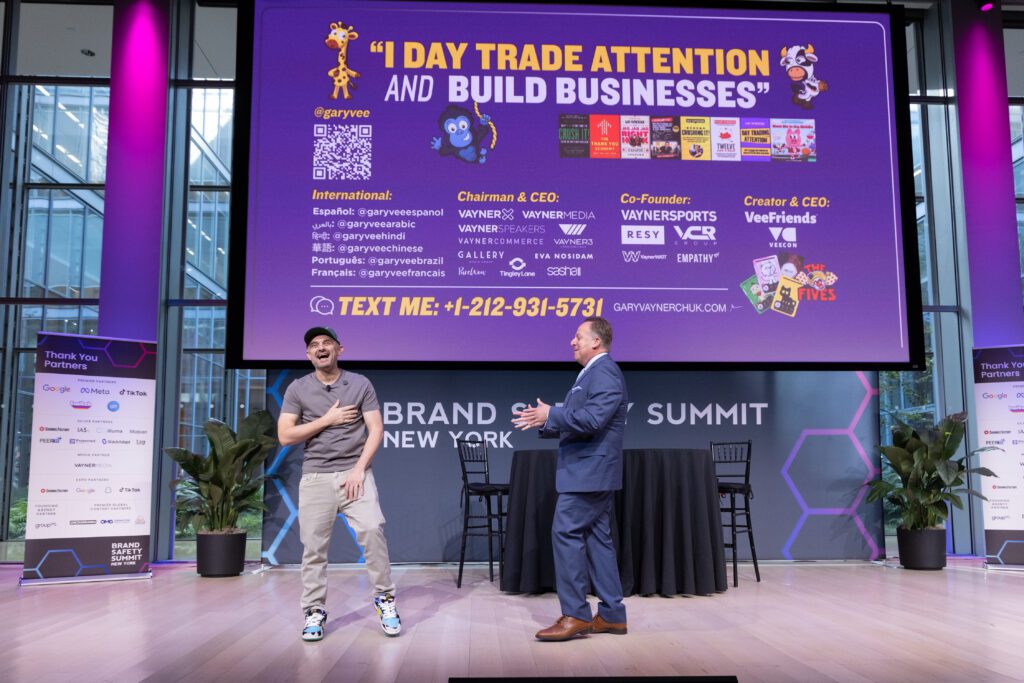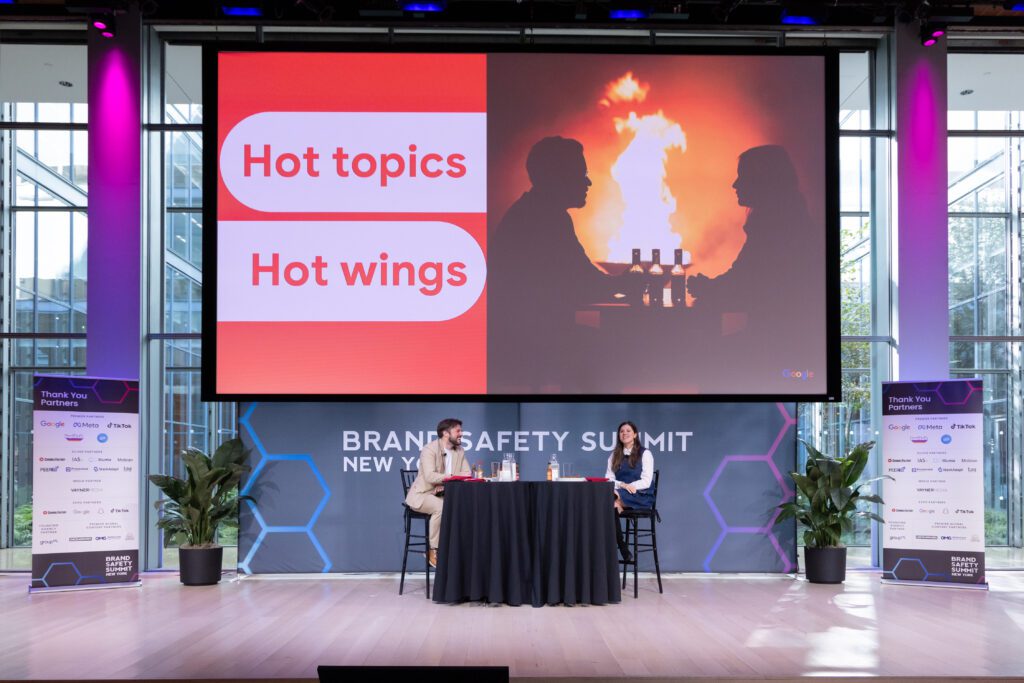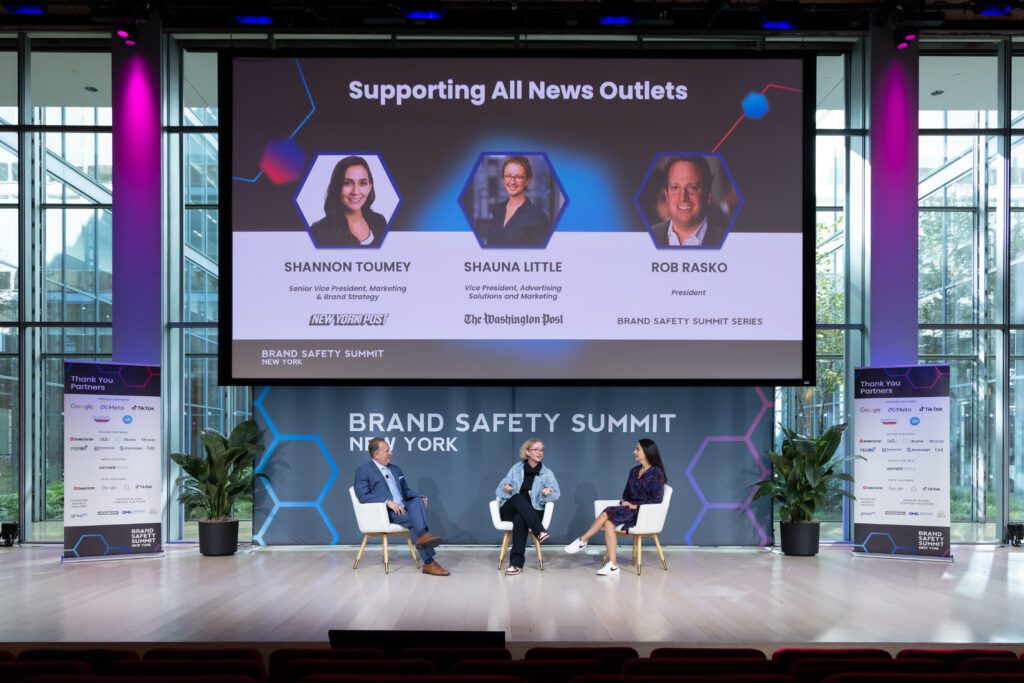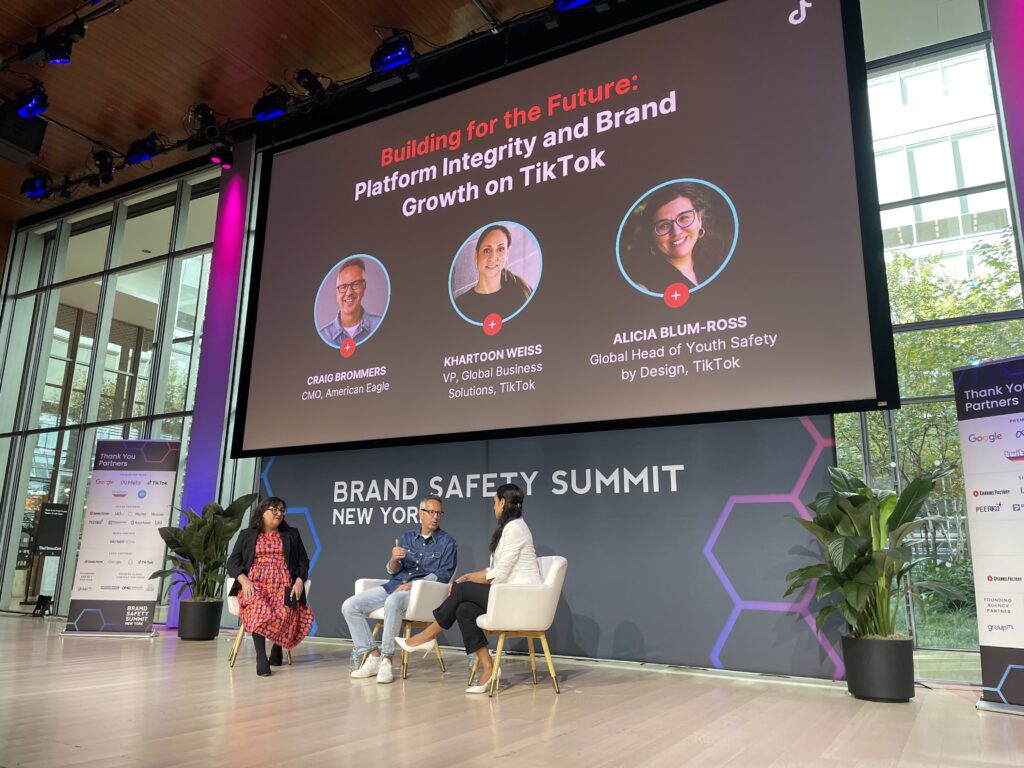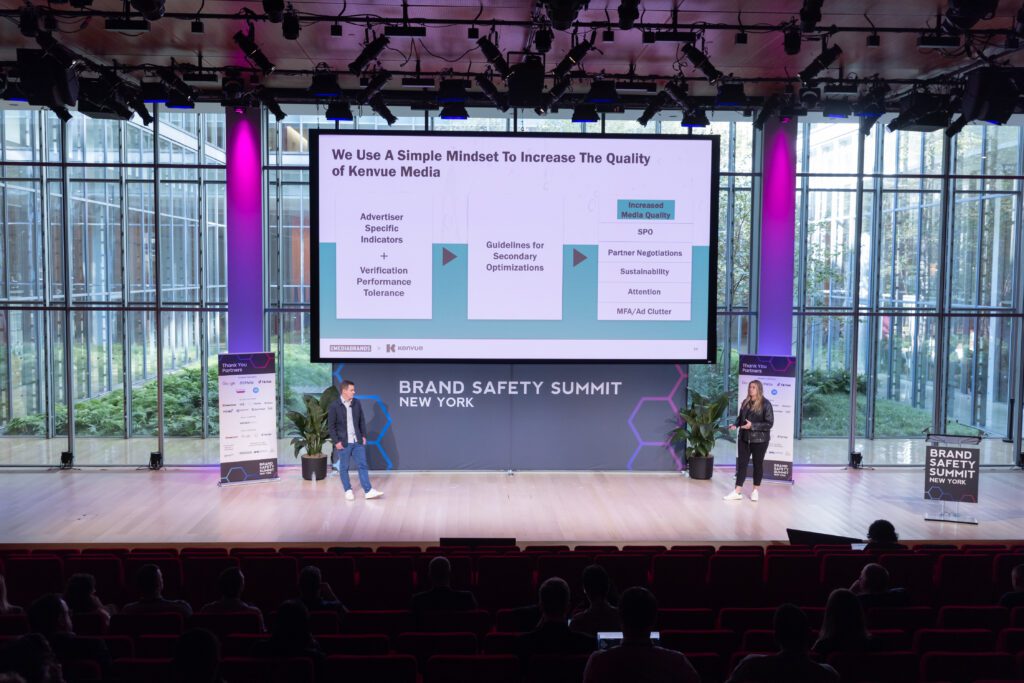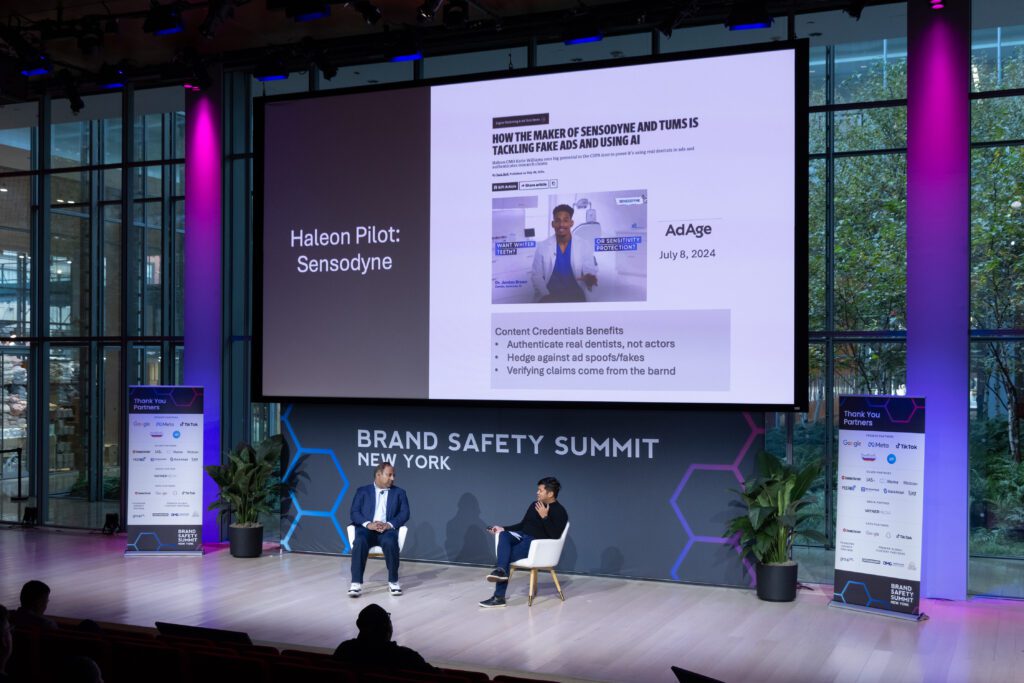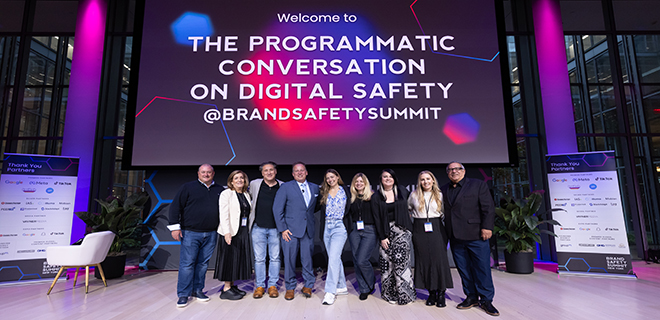
From Gary Vee’s candid call for authenticity to Haleon’s focus on transparency, Day 2 at the Brand Safety Summit delivered many key takeaways for professionals. Join us as we unpack the highlights, from social media challenges to responsible AI and youth mental health.
During day 2 of the Brand Safety Summit we heard from a compelling mix of voices from across media, marketing, and mental health, each offering fresh perspectives on building trust and navigating brand safety.
As industry leaders confront myriad challenges—from misinformation and AI’s rapid rise to the evolution of social media—one thing is clear: the future of brand safety demands both innovation and accountability.
This year’s sessions tackled these topics head-on, encouraging publishers and brands to think deeply about their role in creating a transparent and responsible ecosystem.
From Gary Vaynerchuk advocating for “real conversations” to Haleon’s steps in content authenticity, the day sparked crucial conversations about purpose and ethics. These discussions couldn’t be timelier; as brand trust becomes a competitive edge, the path forward calls for radical transparency and meaningful connections with audiences.
By integrating advanced tools, fostering inclusivity, and leading with integrity, brands, publishers, and platforms pave a path toward a safer, more impactful future. Read on for a roundup of the day’s most impactful sessions, highlighting strategies that can help you balance safety and responsibility.
Gary Vee Unplugged – Real Talk on Media, Accountability, and the Power of Now
Gary Vaynerchuk, CEO of VaynerMedia, didn’t shy away when discussing what media is today: the ultimate power broker. He called for greater authenticity and a renewed focus on living in the present. Here’s what we learned from his session:
Media is the New Power Broker – Media isn’t just an industry—it’s a force that commands influence, comparable to the impact that religious texts or broadcast networks once held. His message? Don’t underestimate the power of modern platforms to sway opinions and shape society.
Cut the Fake Conversations -The industry has a ton of superficial talk, with people “pretending” rather than being authentic in business. Authenticity and accountability are essential for genuine change in the ad tech space.
Winning is About ‘Now’ – Corporations often get stuck between reverence for the past and anxiety about the future. Gary’s advice is simple: embrace the present, where “the magic happens,” to stay agile and competitive.
Spice and Strategy = AI in Brand Safety
In a fiery twist on ad tech talks, Danielle Wolinsky, Global Head of Responsible Media Solutions at Google, took on hot wings and hot topics with Dave Byrne from IPG Mediabrands. As the spice levels climbed, so did the insights on AI, brand safety, and transparency. In this one-of-a-kind “spicy” session, Wolinsky and Byrne cooked up a fresh take on responsible media:
Precision with AI-Powered Controls – Between bites, Danielle reminded us that AI isn’t just a buzzword. She says new tools give advertisers better visibility and control, empowering them to make more responsible decisions about content exclusions without constant micromanaging.
Transparency and Synthetic Content – Google is stepping up with metadata and watermarks to help viewers identify AI-created content, ensuring that brands can maintain authenticity in an evolving digital landscape.
Rethinking Exclusion Lists for Accountability – Brands need to think very hard about whether they’d be comfortable exposing content exclusions to the public. By revisiting their lists regularly, brands can better balance inclusivity and control, ensuring they stay accountable and authentic while navigating brand safety.
The Washington Post and New York Post: News, Safety, and Trust
Shannon Toumey, SVP of Brand Strategy and Marketing at The New York Post, and Shauna Little, VP of Advertising Solutions and Marketing at The Washington Post, joined Rob Rasko for a serious discussion surrounding brand safety in the news. Here’s what we learned:
Context is King – Advertising in premium news environments isn’t about dodging keywords—it’s about understanding the nuanced spaces that resonate with audiences. Context can be an asset, boosting brand impact and aligning with audience values.
Misinformation Myths – The two publishers discussed the common misconception that news environments pose a risk to brand reputation. Contrary to popular belief, credible news outlets are often as safe as other “safer” placements, with minimal negative impact on brand reputation. Advertising in trusted news sources can be a safe, effective choice.
Transparency and Trust – Transparency and trust go together like peanut butter and jelly. Both publishers underscored the need for brands to have clear insights into ad placements, which allows for informed decisions and builds trust. In short, news can be a brand-safe playground—with the right perspective and a little transparency.
Platform Integrity and Brand Growth on TikTok
Khartoon Weiss, VP of Global Business Solutions and Alicia Blum-Ross, Global Head of Youth Safety by design at TikTok, sat down with Craig Brommers, CMO at American Eagle to discuss TikTok’s brand safety evolution, collaboration with advertisers, and youth safety in the face of AI advancements. The key points discussed include:
Trust and Control in Brand Safety – TikTok has enhanced its offerings with inventory controls and video category exclusions, creating a safe environment for brands in a dynamic social space.
Collaboration with Brands – TikTok and American Eagle highlighted the importance of open dialogue and collaboration. Brommers praised TikTok’s responsiveness to feedback, noting that TikTok’s agility has allowed for real-time adjustments that align with brand values, creating a proactive partnership rather than a reactive one.
Navigating the Future with AI and Youth Safety – TikTok is integrating AI safeguards, balancing innovation with protective measures to ensure a safe environment for younger users while setting new standards for responsible tech. Alicia shared that youth safety is woven into the platform’s foundation, with tools designed to protect and empower younger users.
Brand Safety Beyond the Checkbox
In an insightful session, Christal Dolan, VP of Enterprise Excellence from UM Worldwide, and Mark Proulx, Head of Global Media Responsibility at Kenvue, explored the importance of brand safety verification. They discussed how to move beyond traditional approaches and reimagine brand safety as a tool for growth. Here are three key points from their session:
Brand Safety is Brand Growth – Dolan urged brands to consider safety more than “insurance.” By placing ads in meaningful, relevant contexts, brands can reinforce positive associations with their audiences. Verification is a tool to ensure alignment with trusted content, creating value beyond simply avoiding risk.
Rethink Verification Practices – Gone are the days of relying on blanket keywords and URL blocking. Instead, Proulx suggested a more nuanced approach using semantic technology to filter content contextually. By narrowing blocklists to “non-negotiable” terms, brands avoid over-blocking and miss out on valuable connections with their audience.
Operationalize Verification for Real Value – Brand safety isn’t a “set it and forget it” solution. Dolan emphasized that verification should be actively managed and tracked as rigorously as any performance metric. Kenvue, for instance, achieved over $3 million in cost avoidance by aligning verification data with real-time ad performance and waste reduction.
With a forward-thinking approach, brands can leverage safety to protect and enhance brand growth.
A Family Affair: Dr. Alfiee Breland-Noble’s Mission on Youth Mental Health
In a mother-daughter appearance, Dr. Alfiee Breland-Noble, founder of the AAKOMA Project, and her daughter Morgan Noble took to the stage to share insights on youth mental health and social media safety. Together, they tackled the complex relationship between identity, mental health, and media influence. Here are the top takeaways:
Social Media Boundaries Start at Home – Setting early boundaries for social media use is essential, helping young users manage their online presence with mindfulness and stress reduction. By instilling values like knowing when it’s time to take a break and being mindful of online content, Dr. Alfiee helped Morgan healthily navigate social media.
Representation Matters – The AAKOMA Project focuses on empowering young people from underrepresented communities and helping them feel valued. The acronym stands for African American Knowledge Optimized for Mentally Healthy Adults. The project reinforces the importance of acceptance and visibility in mental health.
Practical Steps for Parents and Caregivers – Through open conversations and healthy device use, parents can support their children’s mental health, promoting resilience and healthier social media engagement.
Haleon’s Content Credentials in the Age of Misinformation
In an informative session, Rishi Mulgund, Performance Marketing Director at Haleon, discussed their pioneering efforts to build consumer trust through content credentials, led by Ray Lansigan, EVP of Corporate Strategy, Digital Experience at Publicis. Here’s what they shared:
Content Credentials for Authenticity – As the first brand advertiser to pilot content credentials, Haleon stamped its ads with verification marks, allowing consumers to verify the authenticity of health experts featured in the ads.
Trust in Advertising Drives Brand Loyalty – Haleon’s content credentialing initiative increased consumer trust by 59% and an impressive 8-point lift in purchase intent.
Future Expansion Across Health Categories – Building on its success in oral care, Haleon plans to extend content credentials to brands like Centrum and Emergen-C, strengthening trust in health-related claims across the board.
Elevating Standards, Building Bridges
Day 2 at the Brand Safety Summit underscored a clear theme: to thrive today, brands and media companies must prioritize trust, transparency, and responsibility. From social media giants refining their safety controls to healthcare brands pioneering new transparency measures, each speaker emphasized the need for deeper connections and authentic engagement.
Proactive strategies that align with public expectations and build trust are powerful. In a world increasingly shaped by AI, misinformation concerns, and shifting digital norms, there is a unique opportunity—and responsibility—to lead with integrity.
As the summit concluded, it was clear that the future of brand safety depends on staying agile, open to collaboration, and committed to building a safer, more trustworthy digital ecosystem for everyone.
